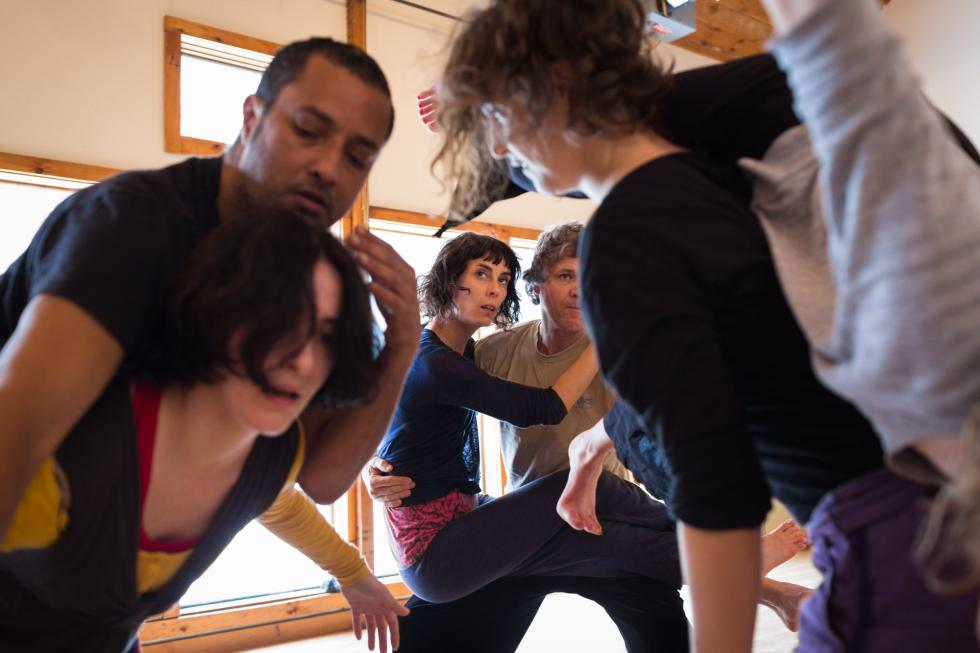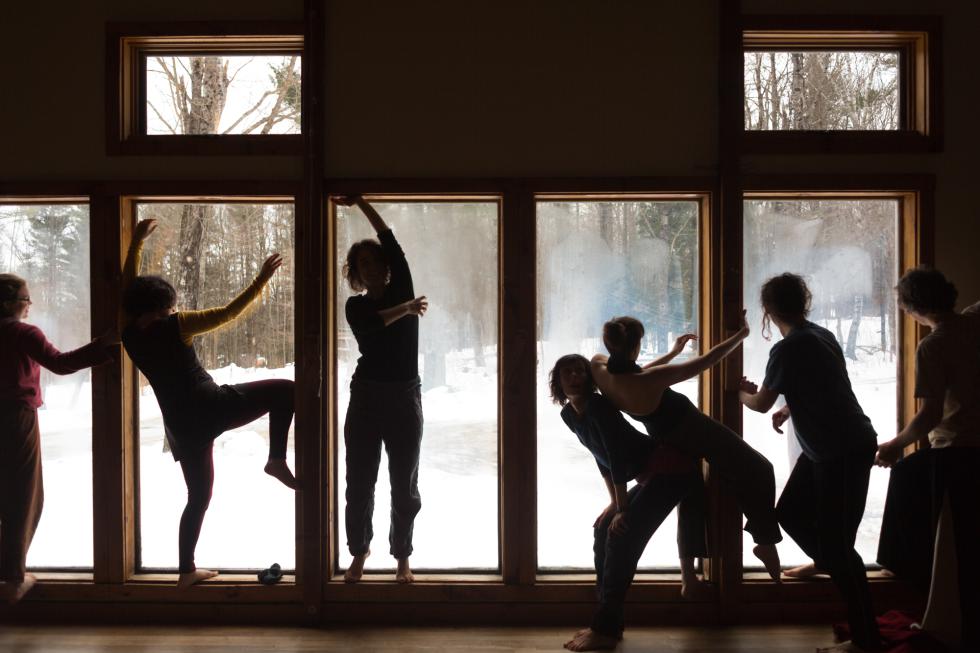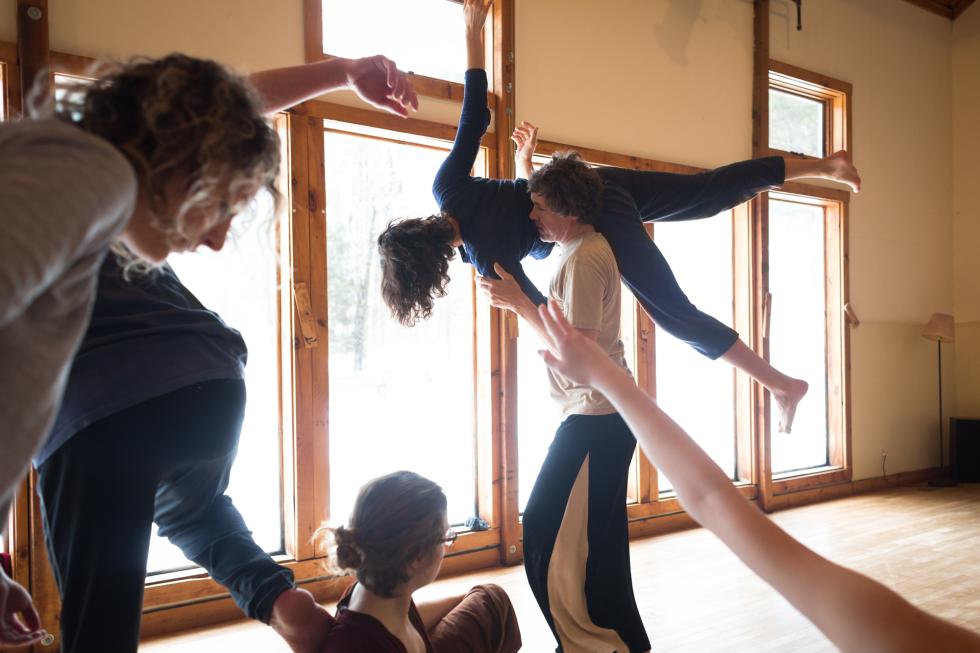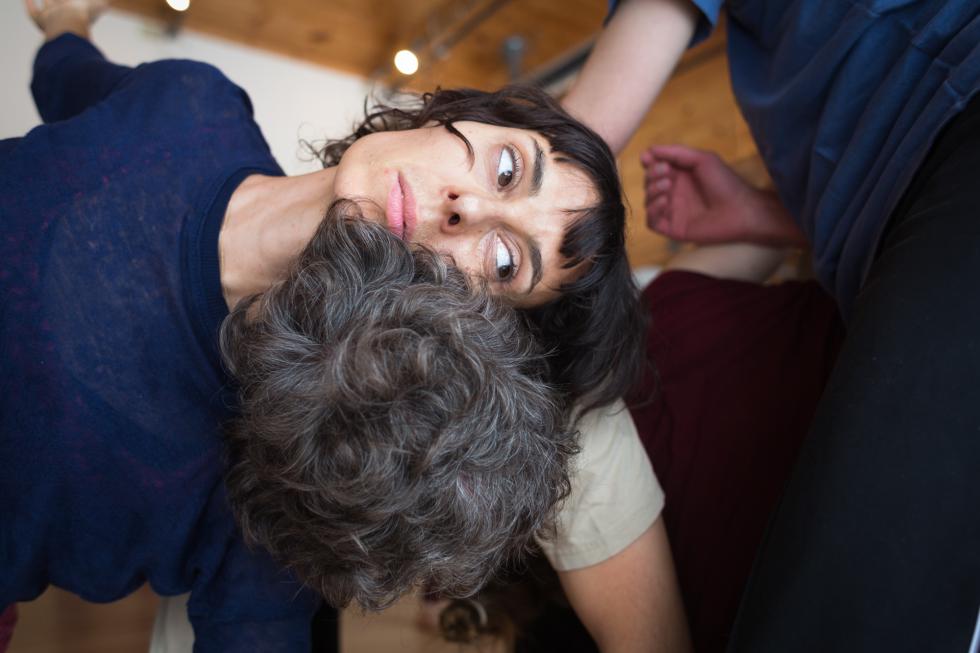Contact improvisation isn’t just dance without choreography, it’s life — a microcosm illuminating a way to be in the world.
“Who you are as a person is who you are as an improviser,” says Nancy Stark Smith, part of the group that spawned the improvisational contact-dance art form in the 1970s. “People learn about themselves, about being human — about not getting what you want and doubting yourself.”
Contact improvisation — an improvised and collaborative system of movement between two or more bodies in contact — is based on using weight play, inertia and gravity to dictate the steps. It’s a physical dialogue, Stark Smith says. In 1975, Stark Smith founded Contact Quarterly, an international improvisational dance journal based in Northampton. In 1986, Earthdance, where Stark Smith teaches contact improvisation workshops, was founded in Plainfield.
Since then, contact improvisation has gained the love of many around the world and Earthdance and Contact Quarterly serve to anchor the practice in Western Massachusetts — Stark Smith’s latest workshop included students from Russia, Berlin, Mexico, and Switzerland.
Sarah Young, executive director at Earthdance, says she and the staff are always dancing. One pre-lunch “staff jam” starts with an informal meeting.
Then, the nine dancers circle up and begin wiggling and kicking their feet to get in the jam zone, orienting themselves with their environment. Wiggling gives way to swaying. Young breaks the circle as she crawls slowly across the floor to the circle’s opposite side. Jake Wise and David Sharpe join her and the three inchworm across the floor.
Slippery floors are used to the dancers’ advantage — one glides hands-first towards the windows. Wise swoops and picks up Young, swirling her around his neck. There is no music, save for the patter of their feet and the rhythm of their breath.
Four of the dancers morph into a triangular shape and then pair off. Come hither glances precede leaps into the air. Seemingly intimate positions are abandoned as the dance keeps moving. At one point, Young becomes a log to leap over.
Mark Messer, the organization’s operations manager, pivots and darts toward the piano at the far end of the room. He makes his fingers dance quickly across the keys and then runs towards the other corner of the room. Messer jumps up and down: “I got excited, I got excited!”
Wise grabs a clarinet and the dance turns into a unified kicking, stomping, giggling, squealing parade around the room.
Just as quickly as the parade begins, it crumbles. The fast-paced jaunt gives way to long, languid movements punctuated by labored breathing. Messer seems to mock the group’s exhaustion and feigns being tired, draping himself over another dancer and making a goofy, exasperated face.
Stark Smith says the practice is about concentrating on the moment at hand and using your sensations to direct your movement. With practice, contact improvisation becomes increasingly acrobatic, so Stark Smith begins her workshops with mat work. Students learn to fall gracefully so that, in the event they must take that avenue, they can fall on purpose.
Young says getting in the right headspace for contact improvisation entails layers of focus.
“It’s a practice of presence, of telescoping your awareness and letting judgment go,” Young says.
No planning is involved. It’s about “riding the waves,” Young says. She says her best indicators are her physical sensations.
“There’s micro decision-making happening in every millisecond,” Young says. “Decisions don’t need to be cerebral. A lot of the time I feel that I’m just following the dance.”
Young says learning to improvise on the floor enables a self-awareness that helps in the real world, like in navigating large crowds and walking over ice. Once, she says, she crashed her bike and was able to fall gracefully to the ground because of her contact improvisation experience. David Sharpe, building and grounds manager, says he works in construction and that the practice has given him a spatial intelligence that has “saved his neck.”
Stark Smith says contact improvisation has contributed significantly to modern dance, that choreographers use the art form as a kind of research.
With contact dance, moments of improvisational brilliance appear organically — the dancers swooping and swirling in ways that compliment the group — appearing almost choreographed.
At the end of the session, dancers move their way into something of a group hug and the dance ends with laughter.
“That’s the hard part — ending the jam,” says Young.•
Amanda Drane can be reached at adrane@valleyadvocate.com.








